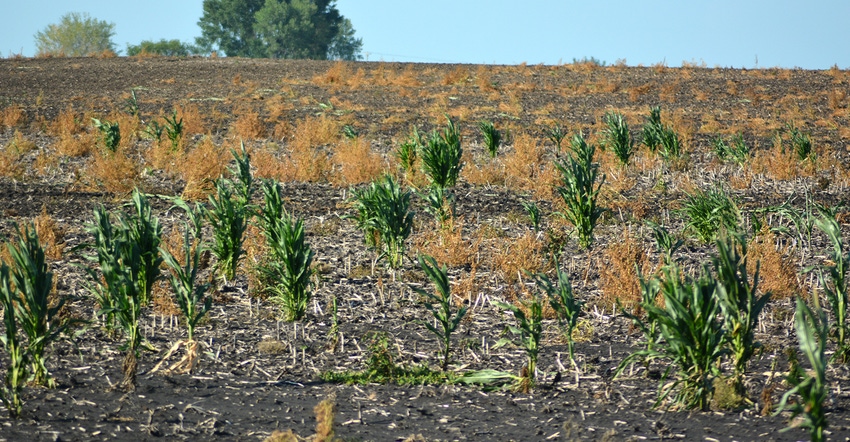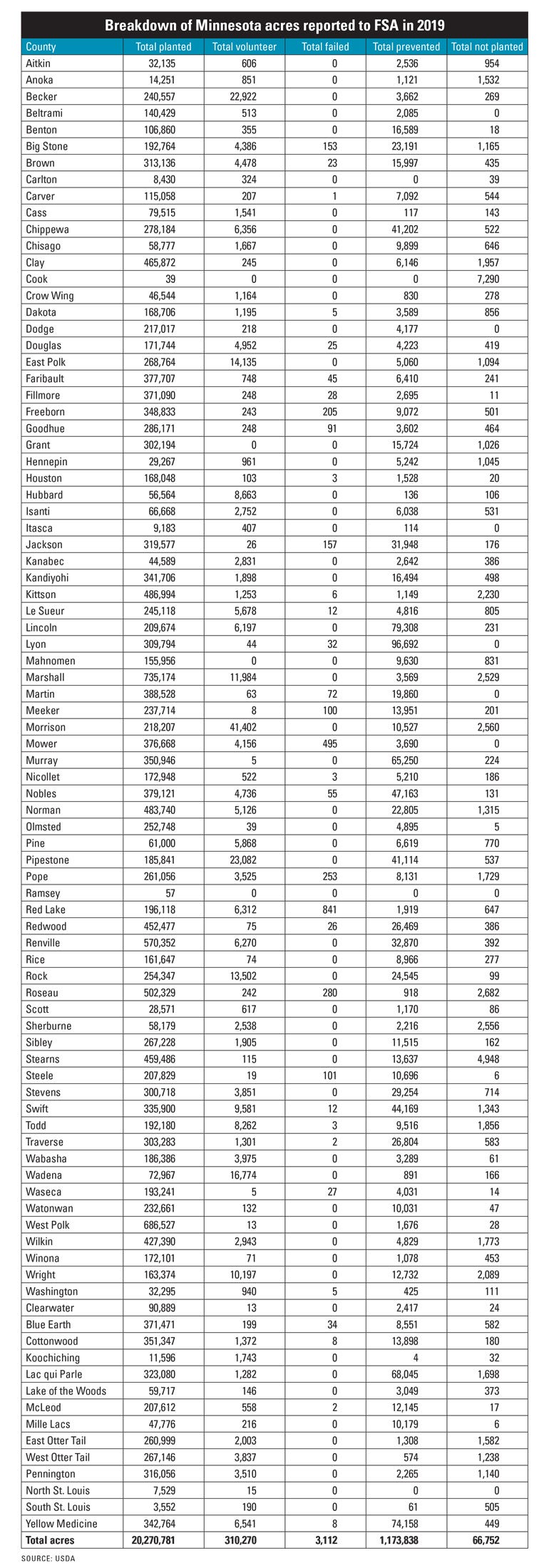
The latest crop report released by USDA shows Minnesota ranking third in corn prevented plant acres reported to Farm Service Agency, following South Dakota and Illinois.
The Aug. 12 report shows Minnesota farmers reported 999,513 acres of corn as prevented plant acres. South Dakota farmers reported slightly more than 2.8 million acres; Illinois, 1.14 million acres.
Overall, Minnesota farmers reported a total of 1.17 million prevented plant acres, placing them at sixth in the nation for prevent plant acreage.
The top state with prevented plant acres was South Dakota with more than 3.8 million, followed by Illinois, 1.5 million; Ohio, 1.49 million; Missouri, 1.39 million; and Arkansas, 1.33 million;
Minnesota farmers also reported the following as prevented plantings: soybeans, 161,528 acres; wheat, 7,608 acres; sugarbeets, 1,457 acres; and oats, 355 acres.

PER COUNTY: This table shows county-by-county acreage in Minnesota that was reported to FSA, planted and not planted.

According to Peter Wood with USDA public affairs, those numbers aren’t expected to change much.
“Minnesota expects to see very few additional acreage reports, especially as it relates to prevent plant acres,” Wood said.
Nationally, farmers reported they were not able to plant crops on roughly 19.4 million acres in 2019. This is the most prevented plant acres reported since USDA’s Farm Service Agency began releasing the report in 2007 and roughly 17 million acres more than reported at this time last year.
Of those prevented plant acres, more than 73% were in 12 Midwestern states, where heavy rainfall and flooding this year has prevented many producers from planting mostly corn, soybeans and wheat.
The report also showed that producers planted 2.71 million acres of cover crops so far in 2019, compared with 2.14 million acres at this time in 2018 and 1.88 million at this time in 2017.
To help make cover crops a more viable option, USDA’s Risk Management Agency adjusted the haying and grazing date of cover crops, and USDA’s Natural Resources Conservation Service held signups in select states that offered producers assistance in planting cover crops. Meanwhile, USDA added other flexibilities to help impacted producers, including adjusting the deadline to file acreage reports in select states.
USDA officials said the report aggregates information from crop acreage reports as of Aug. 1, which producers filed with FSA to maintain program eligibility and to calculate losses for various disaster assistance programs. The crop acreage data report outlines the number of acres planted, prevented from planting, and failed by crop, county and state.
To find more information, view the Aug. 12 report.
Because some producers have not completed their filing and data are still being processed, FSA will make available subsequent data reports in September, October, November, December and January. You can find reports dating back to 2007 on FSA’s Crop Acreage Data webpage.
To receive FSA program benefits, producers are required to submit crop acreage reports annually regarding all cropland uses on their farm. This report includes data for producers who had already filed for all deadlines in 2019, including the mid-July deadlines, which are for spring-seeded crops in many locations.
Other prevented planting indicators
In addition to acreage reports filed with FSA, producers with crop insurance coverage for prevented planting file claims with their insurance providers. These claims are provided to RMA and may differ from the prevented planted acres reported to FSA. More information on prevented plant coverage is available on the RMA website.
Official USDA estimates of total acres planted, harvested and to be harvested, yield, and production are available from USDA’s National Agricultural Statistics Service at nass.usda.gov.
About the Author(s)
You May Also Like






